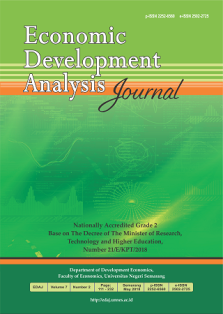Analysis of Effect of Capital Inflow Volatility and Macroeconomic Variables on Rupiah Exchange Rate
Abstract
The purpose of this research is to measure the effect of the capital inflow volatility on the rupiah exchange rate, to measure the effect of macroeconomic variables on the rupiah exchange rate, and to measure the response of capital inflow shocks and macroeconomic variables on the rupiah exchange rate. The data used is in the form of quarterly time series data from 2002:4-2014:4, which is derived from the data of Bank Indonesia. The model used in this research is the Vector Error Correction Model (VECM). The results show that: (1) In the short-term capital inflow has the positive and significant effect on the rupiah exchange rate, while in the long-term it does not have the significant effect on the rupiah exchange rate. (2) Macroeconomic variable that has the positive and significant effect on the rupiah exchange rate in the short-term is the capital inflow variable. In the long-term the macroeconomic variable that has the positive and significant effect on the rupiah exchange rate is the foreign exchange reserves variable. (3) Results of IRF, the response of the rupiah exchange rate of the capital inflow shocks indicates that an increase in capital inflow has effect on the strengthening of the rupiah exchange rate. The shocks on the foreign reserve variable have the positive effect on the rupiah exchange rate, and the shocks on the inflation variable have the negative effect on the rupiah exchange rate.


